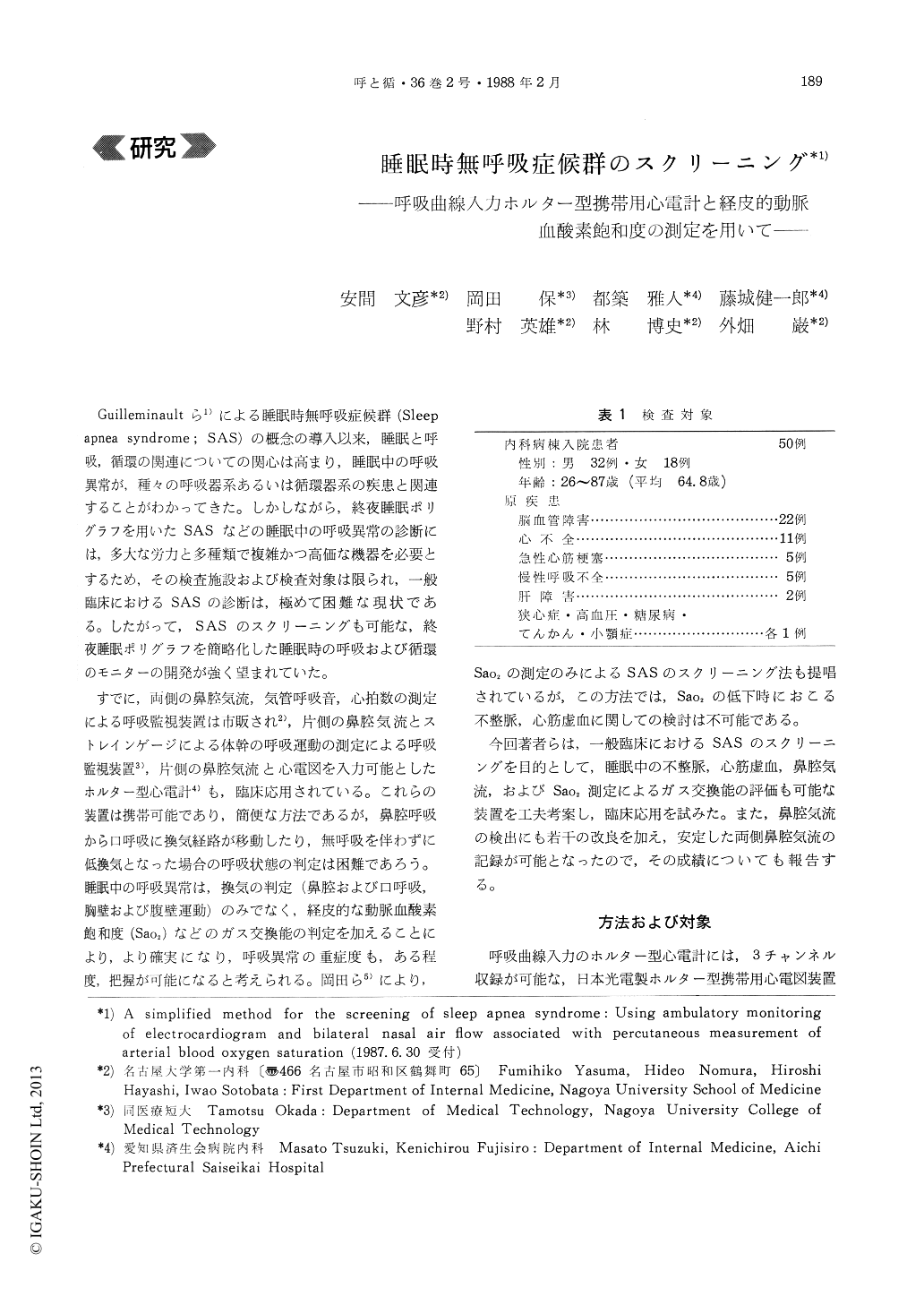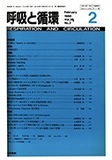Japanese
English
- 有料閲覧
- Abstract 文献概要
- 1ページ目 Look Inside
Guilleminaultら1)による睡眠時無呼吸症候群(Sleep apnea syndrome;SAS)の概念の導入以来,睡眠と呼吸,循環の関連についての関心は高まり,睡眠中の呼吸異常が,種々の呼吸器系あるいは循環器系の疾患と関連することがわかってきた。しかしながら,終夜睡眠ポリグラフを用いたSASなどの睡眠中の呼吸異常の診断には,多大な労力と多種類で複雑かつ高価な機器を必要とするため,その検査施設および検査対象は限られ,一般臨床におけるSASの診断は,極めて困難な現状である。したがって,SASのスクリーニングも可能な,終夜睡眠ポリグラフを簡略化した睡眠時の呼吸および循環のモニターの開発が強く望まれていた。
すでに,両側の鼻腔気流,気管呼吸音,心拍数の測定による呼吸監視装置は市販され2),片側の鼻腔気流とストレインゲージによる体幹の呼吸運動の測定による呼吸監視装置3),片側の鼻腔気流と心電図を入力可能としたホルター型心電計4)も,臨床応用されている。これらの装置は携帯可能であり,簡便な方法であるが,鼻腔呼吸から口呼吸に換気経路が移動したり,無呼吸を伴わずに低換気となった場合の呼吸状態の判定は困難であろう。睡眠中の呼吸異常は,換気の判定(鼻腔および口呼吸,胸壁および腹壁運動)のみでなく,経皮的な動脈血酸素飽和度(SaO2などのガス交換能の判定を加えることにより,より確実になり,呼吸異常の重症度も,ある程度,把握が可能になると考えられる。岡田ら5)により,SaO2の測定のみによるSASのスクリーニング法も提唱されているが,この方法では,SaO2の低下時におこる不整脈,心筋虚血に関しての検討は不可能である。
Fifty ordinary inpatients (32 male, 18 female, age 26-87: mean age 64.8) with cerebrovascular disease (44%), heart failure (22%), acute myocardial infar-ction (10%), chronic respiratory failure (10%) and other underlying diseases (14%) were screened for sleep apnea syndrome (SAS). The screening method was composed of the measurernent of arterial blood oxygen saturation using pulse oxymeter (Ohmeda Inc. Biox 3700R) and the ambulatory monitoring of elect-rocardiogram and bilateral nasal air flow using 3 channel Holter type electrocardiograrn (Nihon Ko-den Inc. DMC-3153®). SAS was suspected in 8 of them. Overnight polysomnography, which was carried out afterward, resulted in definitive diagnosis of SAS in all 6 of them. This screening method did met permit accurate determination of sleep stages nor of apnea types, but enabled evaluation of bilateral nasal respiration, arterial blood oxygen desaturation, ar-rhythmia and myocardial ischemia. Using this met-hod, the severity of SAS could be roughly estimated, prior to the definitive diagnosis by overnight poly-somnography. This simplified method was considered useful clinically for the screening of SAS.

Copyright © 1988, Igaku-Shoin Ltd. All rights reserved.


